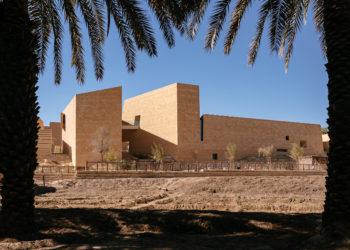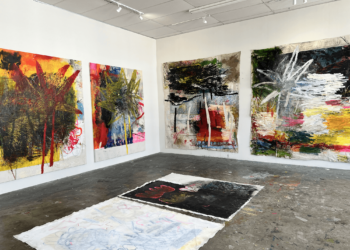COLLECTOR 03
Brendon Bell-Roberts talks to Paris-based collectors and art patrons Gervanne and Matthias Leridon about their support of the Zeitz MOCAA museum of contemporary art Africa
Illustrating their generosity and support of the arts across Africa Gervanne and Matthias Leridon are hosting a lavish celebration to usher in the newly completed Zeitz MOCAA Museum in Cape Town, South Africa. The couple, who will host a wide range of guests that include all the key players in the local artworld, as well as a wide range of international visitors who are descending on Cape Town for the museum opening. However their passion for collecting firmly focusses on the artist and their support and network ensures that there will be an extensive list of artists in attendance.
Special guest and co-hosts include Serge Lasvignes, President of the Centre Pompidou, and Christine Macel, Curator of the 57th Venice biennale, who have been specially invited and hosted by the Leridon’s in order to supplement the opening of what many, arguably, call the most important contemporary art venue of the century to open on the continent.
Despite this lavish event it is important to understand more the history and passion of the Leridon’s in order to understand why the Parisian couple applauds the opening of a museum at the Southern tip of Africa. Their foundation African Artists for Development (AAD) was started in 2009 in response to the UN Millennium Development Goals (MDG), with the endowment fund African Artists for Development backs community development projects associated with works by contemporary African artists with a deep-seated conviction to secure a better future for the continent through development projects.
Brendon Bell-Roberts: What effects do you think the opening of the Zeitz MOCAA museum will have on the art industry in Africa?
Matthias Leridon: African art and artists seem to always wait for affirmation or acceptance, with the launch of the museum the eyes of the world will be firmly on the content now. For this reason too it is important for the opening to be a great success so that all stakeholders and the entire industry on the continent can benefit. That is why it is essential that everyone backs up the museum to ensure a successful launch. After all, this is an amazing initiative which will bring an international focus and audience to Cape Town and Africa. This makes a statement about African art, design, and creativity and foregrounds the modernity of our continent. The effects on the industry could be far reaching.
Do you think the museum will make an international impact?
As the biggest institution focused on contemporary art in Africa, it will effectively becomes the flag for African art and with this comes great responsibility and challenges. The quality of artists showcased and the exhibitions presented need to reflect this and live up to international standards and their work needs to be en per with that of the world’s top practising contemporary artists.
The quality and level of curation will also be very important with the location in Cape Town helping to drive debates around South Africa and the continent, numerous political, social and financial challenges. It is important that African people create and drive their own African narratives.
 Gervanne Leridon. Photograph: Nyaba Ouedraogo. Image courtesy of African Artists for Development.
Gervanne Leridon. Photograph: Nyaba Ouedraogo. Image courtesy of African Artists for Development.
Do you think the museum will live up to all the hype and expectations?
It is very important that the first Museum of Contemporary African Art in Africa impresses international institutions and that the museums and institutions take note as a result of the quality of work on exhibit and not only the Thomas Heatherwick building and the ambitious programmes being planned. This Museum has the opportunity to act as a great catalyst for positive change in the contemporary art market and it will need to draw all the various players of the contemporary African art world together to ensure this and gather the support they will need moving forward. This dialogue needs to be an ‘exchange’ where the museum does not ‘talk down’ to the ecosystem but works with and includes it. The museum needs to attract and engage with collectors, universities, intellectual thinkers, and the market as a whole.
So how will we know when they are succeeding?
The Zeitz Collection opening exhibition is all good and well but what is more important than the first exhibition and event is what comes next. Ambition creates duty and it is important that the museum ensures that it is able to integrate the African continent’s creativity into the global dialogue. The impression created by the awe-inspiring reception hall needs to be backed up by the exhibition spaces and the exhibitions showcased there. The museum can play a huge role in the perception of the continent by leap-frogging “cliched perceptions” of Africa.
The exhibitions and programmes need to live up to international standards as they will be compared to similar international institutions by discerning international visitors and the industry alike. The museum needs to meet these expectations and deliver a strong emotional “impact.” When large international institutions are happy to co-produce exhibitions with them we will know that the museum is being taken seriously and doing things right.
Such an institution has the opportunity to showcase the vitality and energy of the continent to the world, and ensures that a culture of exchange is central to their practice is essential. The museum should become a “cultural trigger” which propels other and even smaller initiatives all around the continent.
You have many years experience dealing with artists in sub-Saharan Africa with projects that have contributed a meaningful impact to the continent’s future. So how does one present a truly representative snapshot of African contemporary art?
There is a real disjoint between those who have travelled the continent extensively and what the media reports about Africa. Creativity transforms and creates questions about the future – the museum needs to do this. Foregrounding pressing social issues is essential in building relevant narratives. For instance – freedom, creativity, culture and modernity is what terrorists attack first in their aim to set civilisation and communities back. It is precisely these issues that help to move society forward which is why museums are so important in helping to highlight these important issues.
Governance is also going to be key to achieving a representative and international standard of recognition. Without this the first museum focused on African contemporary art will not be able to be en par with international institutions or develop solid international partnerships.
 Matthias Leridon. Photograph: Elodie Grégoire. Image courtesy of African Artists for Development.
Matthias Leridon. Photograph: Elodie Grégoire. Image courtesy of African Artists for Development.
Gervanne Leridon tells us a little more about their African Artists for Development Endowment and their recent project ‘Lumières d’Afriques:’
When asked about what in particular the Leridon’s look for when collecting contemporary art from Africa Gervanne Leridon claims, “There’s nothing in particular about African art that we are looking for. What is unique is the uniquesness of each artists that usually draws us to their work.”
Leridon went on to say when questioned about whether she feels artists play a major role in society, “They play a major role! The sensory prism through which artists give us a glimpse of the world is very different from the technological, economic, and scientific vision that seems to dominate discussions.”
About the African Artists for Development Endowment she adds, “Africa’s artistic scope is not sufficiently appreciated, we see and use African Artists for Development as a powerful cultural adventure. Meeting Africa’s exceptional and committed artists – talking to them – and promoting their art is both a challenge and a great opportunity. Through our travelling exhibition Lumières d’Afriques (which included specially commissioned work by 54 artists – one from each African country), we wanted to share with the public each artists story by filming the development of their piece, in the environment in which it was created, and to discuss his/her sources of inspiration. Facilitating a dialogue between those involved; creating alliances for progress between cultures, women and men; and integrating contemporary art is the future of the continent we are giving birth to.”
African Artists for Development since the beginning of the project has been committed in presenting ‘Lumières d’Afriques’ all around the continent. After Abidjan and Dakar, ‘Lumières d’Afriques’ will be showcased at the headquarter of the African Union in Addis Ababa at the end of this year.
The African Artists for Development Endowment was set up in 2009 by Gervanne and Matthias Leridon in response to the UN Millennium Development Goals (MDG), the endowment fund African Artists for Development backs community development projects associated with works by contemporary African artists.
For more about African Artists for development visit: aad-fund.org



